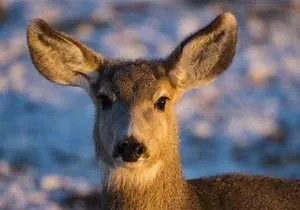Black bears have become a common sight in parts of Oklahoma in recent years, a good indicator that the species is expanding its habitat range westward.
In recent years, black bears have been seen in places where no record of sightings exist in modern times. Sightings have been reported near Broken Arrow, Tahlequah, Muskogee, Wewoka and Ada.
“Bears are coming to a location near you,” said Nels Rodefeld, chief of the information and education division of the Oklahoma Department of Wildlife Conservation. “For anyone in Oklahoma who is east of Interstate 35, the potential is there to see a black bear.”
The black bear’s range has primarily been in Latimer, Le Flore, Pushmataha and McCurtain counties in southeastern Oklahoma, and in Adair, Cherokee and Sequoyah counties in east-central Oklahoma. But the range has been slowly expanding westward in the past several years.
Landowners and sportsmen most anywhere in the eastern half of the state shouldn’t be surprised if a black bear turns up on their game camera images this spring and summer.
And since the female bears, or sows, will likely have cubs in tow during the summer months as they forage for food, it is increasingly likely that hikers and recreationalists could have a bear encounter.
Most encounters with black bears in Oklahoma result from the animal’s search for food. The black bear’s natural diet includes nuts, berries, grasses, insects, eggs, honey, small mammals and carrion. But bears are opportunists and can be attracted by easy food sources provided by people, such as unsecured garbage or outside pet food. To minimize the chances of attracting bears to your property or campsite, always make sure that garbage is contained and pet food is not left outside.
Black bears in Oklahoma are generally 2 to 3 feet tall at the shoulder, and weigh between 150 and 400 pounds. Their color can vary from black to chocolate brown to pale cinnamon. Bears began spreading into Oklahoma from Arkansas in the 1970s and ’80s, several decades after Arkansas conducted a bear relocation program. A small population of black bears is also found in the far western Oklahoma Panhandle.
The Wildlife Department has research projects into black bear populations ongoing in northeastern and southeastern Oklahoma.
In 2009, Oklahoma established bear hunting seasons in the four southeastern counties after studies indicated the bear population in that part of the was healthy enough to allow hunting. The black bear is a regulated big-game animal in Oklahoma; it is illegal to kill a bear outside of the established bear hunting seasons.
To report a nuisance bear in areas north of Interstate 40, call senior biologist Mike Plunkett at (918) 625-3910 or senior biologist J.D. Ridge at (918) 617-1113. To report a nuisance bear in areas south of I-40, call wildlife biologist Jeff Ford at (918) 527-9918 or technician Matt Hensley, (918) 260-3920. Nuisance bears may also be reported to any local game warden. A game warden directory is available at wildlifedepartment.com.




